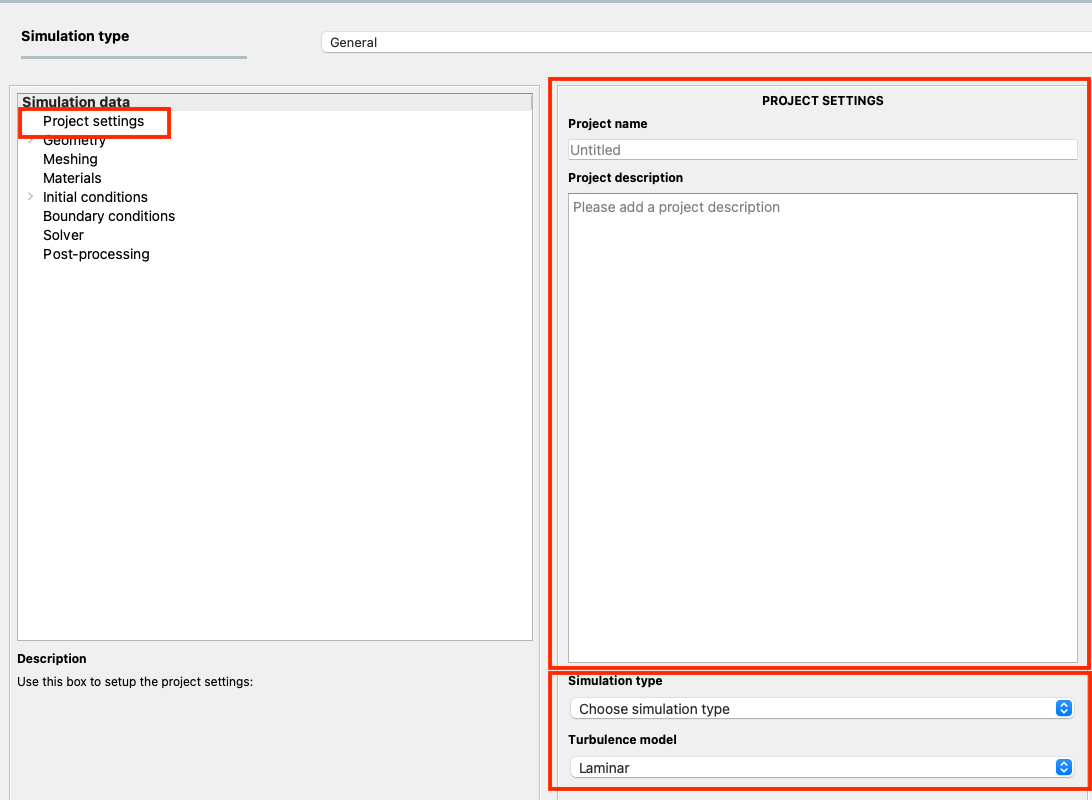2.4.1. Project settings¶
The first step is to setup the project as shown in Fig. 2.4.1. All of these settings, except Simulation type, are optional. However, setting them makes the future steps easier.

Fig. 2.4.1.1 Project settings for Hydro event¶
Project name and description: This is an optional parameter primarily meant for the user to identify and differentiate between projects.
Simulation type: This is mandatory and without a selection of the type, no other options can be set. The various simulation types available in
Hydroevent are as shown in Fig. 2.4.1.2. The differences between different simulation types are as given below.
Fig. 2.4.1.2 Simulation types available in
Hydroevent¶CFD to resolve SW (Using SW results): This setting facilitates the user to import solutions from pre-run two-dimensional shallow water solver. The user can select small portions of the shallow-water domain and setup high-fidelity three-dimensional CFD on these selected areas. For example: If one had a GeoClaw simulation for an earthquake on the Alaska fault and one is interested in the inundation in Cresant City, CA (USA). Then, the user can bring in the GeoClaw solutions and resolve the near-coast using a full three-dimensional CFD simulation.
CFD using bathymetry data: This simulation type allows the user to setup a CFD simulation using the geometry defined through the bathymetry data of the ocean floor.
CFD using STL file: This simulation type allows the users to setup the CFD simulation using STL files to define the geometry of the domain.
CFD of wave flume: This simulation type allows the user to access the
Wave Flume Digital Twin.
Turbulence model:

Fig. 2.4.1.3 Turbulence settings available for
Hydroevent¶Hydro-UQ presently supports two different turbulence models as shown in Fig. 2.4.1.3. The available options include:
Laminar
k-Epsilon
k-Omega SST
By default, the flow is assumed to be laminar if no turbulence model is selected. More information about the turbulence wall models is available in the technical manual (CFD Solvers).